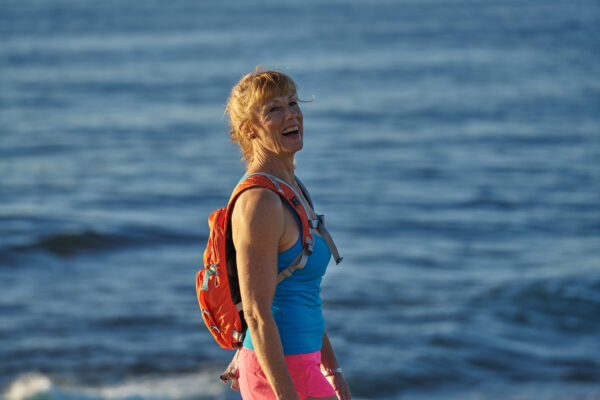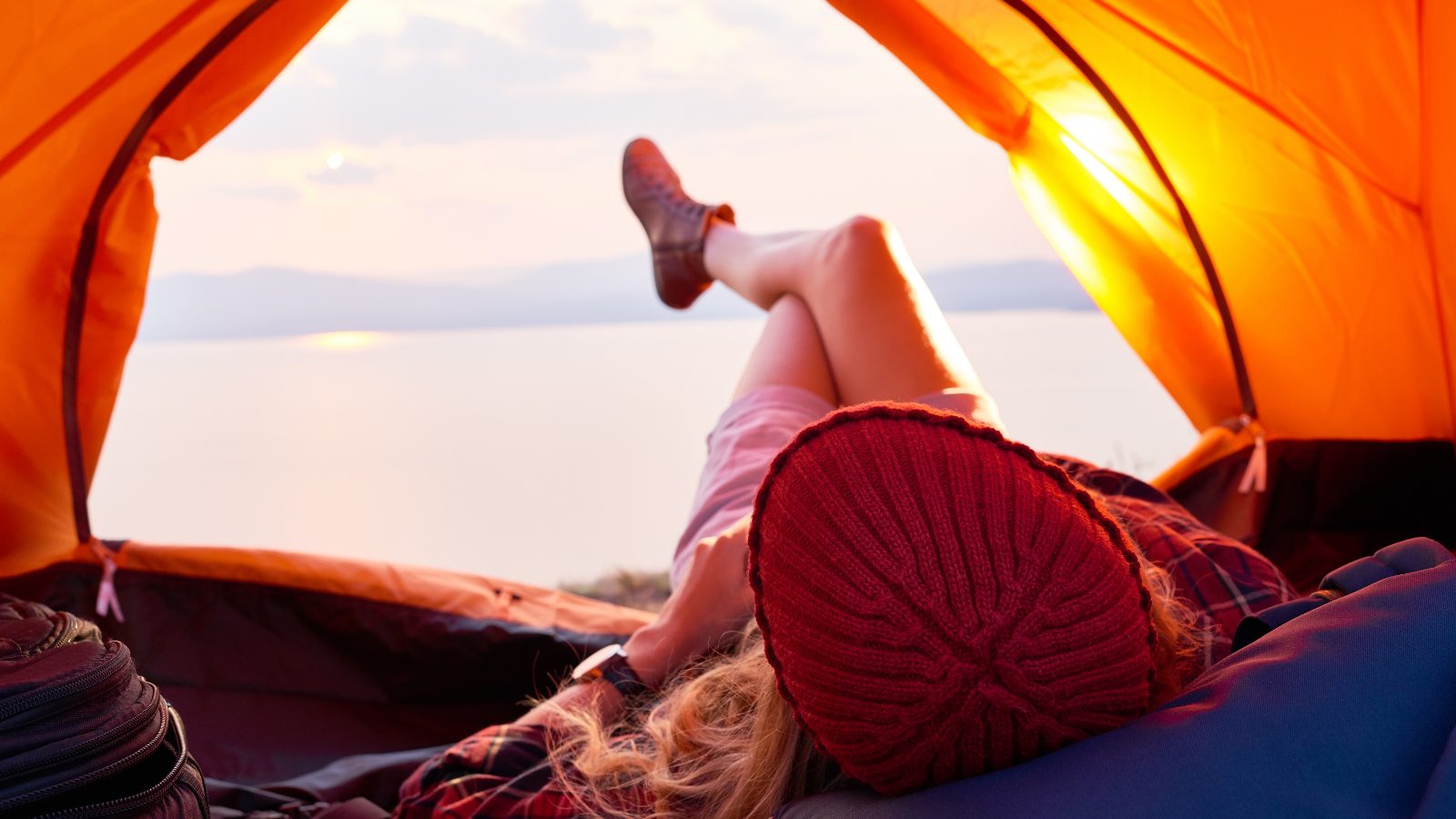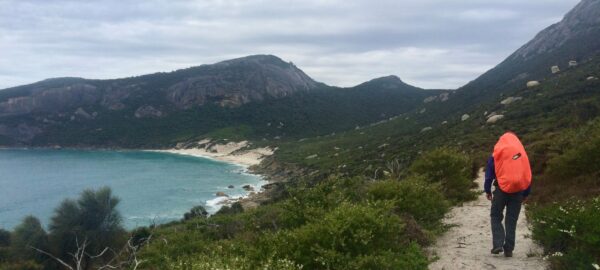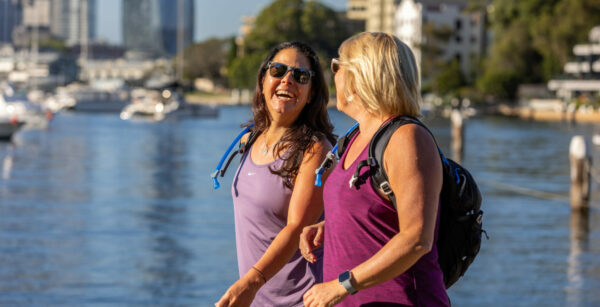We’re bringing you our most fabulous tips and tricks we have learned about gear from 15 years of adventures. Enjoy.
65-litre back pack
A pack of this size will take you almost anywhere in the world with all your gear for up to a week and will hold up to 25kg. However, we recommend you never carry more than one third of your body weight, which, for the average woman, is around 22kg. This size pack is perfect for full-pack hikes.
For supported hikes, where you have porters or mules to assist you, you will only need a 45-litre pack, which holds around 15kg, for your personal day gear.
Sleeping bag to minus 10°C
Some people sleep hot and some sleep cold, so the warmth of a sleeping bag is very personal. We recommend down bags because they are warm and lightweight, but they don’t work if they’re wet. Always wrap your sleeping bag in a strong garbage bag or a waterproof stuff sack because your survival could depend on it.
When purchasing a sleeping bag, consider the coldest adventure you ever want to experience, and buy a bag for those conditions. I have had a minus 30°C down bag for the past 12 years and I take it everywhere with me. When I get hot, I just stick my feet out. Love it!
Self-inflating mat
If you want a good night’s sleep, don’t be tempted by cheap mat! A quality self-inflating mat will pack up small in your pack, expand easily and keep you comfortable and warm. Some brands make a women’s model, which is thicker on the hips, shorter and ‘mummy’ shaped. There are some brands you blow up, and others that contain some feather down for extra warmth.
Drink bottle and/or hydration pack to 3 – 4 litres
Hydration packs (or bladders) encourage you to drink more but they sometimes leak when you squeeze them into a full pack. The leaks are usually caused by the tube popping off the connecting joint, which is easily fixed. However, if all your gear gets wet in the process, it can make your life very uncomfortable and even be life threatening in some circumstances.
If you do choose a hydration pack, ensure you get the best quality possible because water availability is about survival, and you don’t want holes in your water supply. We recommend a two-litre capacity plus two water bottles in most circumstances. I prefer two 500ml bottles attached to my hip belt and three more one litre water bottles in my pack. Water is about survival, so go for good quality bottles, light weight, in BPA-free plastic or metal and make sure you have some with open necks so you can fill them easily in mountain streams.
Lightweight plate, bowl, knife, fork, spoon
Lightweight is essential, usually plastic. Think about the space in your pack and size to suit your appetite.
Mug
Many people opt for a lightweight, plastic mug, but I’m well known for taking my bone china mug with me everywhere I go. I love drinking out of a good quality mug, and I’m happy to carry a bit of extra weight to allow for this.
Toothbrush, toothpaste, comb, insect repellant, lip balm and sunscreen
Think small and lightweight. Share with a buddy or two if possible (maybe not the toothbrush, though!).
Matches
Windproof and waterproof are best.
Stuff sacks
Stuff sacks are clever bags that come in many sizes and colours to sort the gear that goes into your pack. They can be waterproof or not. Two or three of each size are great but too many can become a problem.
One of our most accomplished packers, Andy, had a very traumatic experience with stuff sacks. She was so organised she had her gear carefully stored in 20 different sized and coloured stuff sacks with a list so she could find everything easily. But then she lost her list and had to sort through 20 stuff sacks to find her spare batteries! She was most put out.
Plastic bags for waterproofing
Most packs are water resistant, but if you have a heavy-duty full pack it might be waterproof. In any case, it is advisable to line your pack with a high-quality garbage bag or pack liner bag. I’d also recommend wrapping your sleeping bag in a heavy duty garbage bag so it is completely watertight. If your budget allows, you can purchase waterproof pack liners to keep your gear dry.
Personal First Aid
Make sure your First Aid Kit includes a space blanket, triangular bandage, compression bandage, paracetamol, ibuprofen, Vaseline, Band-Aids, blister blocks and tampons. Only bring enough for your personal use and keep in a small dry bag.
Head torch and spare batteries
There are many varieties of head torches on the market but we prefer the lightweight ones that fit onto a headband attachment, with several options of light intensity. If you’re using your head torch for trekking in the dark, ensure you get a good quality one that casts a strong beam of light because this is the safest option. We prefer a head torch that is lightweight, comfortable and provides enough light to trek in the dark as long as you use fresh, good-quality batteries. If the batteries are old, you will still get some illumination, but we don’t recommend night walking with low light. The type of batteries you use can make a big difference to the quality of the light. We’d recommend lithium batteries but they are expensive and not essential.
Emergency Kit
Your emergency kit should include a whistle, small signal mirror (non-glass) and a lighter/fire-starter. A whistle should be carried on your pack or on a cord around your neck at all times. If you ever get lost and need assistance, it’s a life saver. The Fox 40 is the world’s loudest whistle so it’s great for attracting attention in an emergency. The mirror needs to be small, and can double as a face mirror. A lighter is great in an emergency if you need to light a fire.
Toilet paper
If you’re only away overnight, bring quarter of a roll. If you’re Hard Core and/or you have strong environmental values, try using the local vegetation instead. Don’t use wet wipes because they take too long to decompose, so they must be carried out. The chemicals on them also aren’t great for your bits.
Water purification
Water purification is very important when hiking because you need to be sure you don’t drink contaminated water. Some people are more sensitive to this than others, but it’s always best to be prepared. Often your guides will boil the water for you, but we still recommend some purification. It’s impossible to be sure that the water has been boiled for the required three minutes.
There are many options for purifying water. You can use tablets which you add to your water, filtration systems, or gadgets that purify by killing bugs in your bottle. Iodine tabs can also be used, but some people are allergic to iodine, so you should talk to your gear supplier to work out what’s best for you. Take the time to get this right if you want to ensure that you stay well and enjoy your hike.
Wet wipes
Wet wipes are moist towelettes with and without perfume and moisturisers added. They come in a variety of pack sizes, and you can even get them in dehydrated mini tablets that you add water to and they swell up to become wipes. Don’t leave home without them because they have many uses. If you can’t shower, a wet wipe is invaluable for personal hygiene. You can use them to wipe out dirty plates and cups, or clean sticky fingers if water isn’t available. Make sure you buy the right size pack for your needs, get ones that are soft and thick and always carry them out of the bush with you.
Pack cover
A pack cover is like a little raincoat for your pack which helps your gear stay really dry in heavy rain. Most full packs are waterproof, but often day packs are not. If you’ve got a pack liner, you might not bother with a rain cover, but they don’t take up much space and they provide some added protection. Bear in mind that they can be a bit tedious to put on quickly and often blow off in strong wind. The best protection is your plastic or waterproof pack liner. Some packs come with a rain cover inbuilt, but you can also purchase them separately.
Map and compass
In most cases you won’t need a map and compass but in a worst-case scenario, if something happens to your guide, for example, they could save your life. Try to learn a few navigation basics so you can look after yourself if necessary. Maps can be purchased online and are always available near the location you’re hiking. It’s fun to follow your route and learn about where you’re going. If you decide to get a compass, choose a map-reading one with a ruler on the side so you can upskill yourself as you hike.
Hand sanitiser
There are several brands on the market but these are great for preventing the spread of bacteria around the camp. Most hiking companies will be very focused on hygiene and will supply soap and water for hand washing, but antibacterial wash is an added protection. If you’re not keen on the chemicals in conventional hand sanitisers, there are some fabulous natural versions on the market. We really like the Dr Bronners one.
Gourmet snacks
Wild Women On Top love gourmet food and we especially love gourmet food in exquisite locations. For us, gourmet food is an essential part of hiking adventures. We go to great lengths to ensure that we have the tastiest, highest-quality food and treats possible no matter how remote the location. Some examples of fabulous treats we’ve enjoyed on adventures include a whole smoked salmon, a flourless chocolate cake carried in a pack for five days, Baci chocolates, a homemade orange and almond cake, chocolate brownies, freshly caught garlic abalone, bliss bars and Wild Women On Top chocolate chip cookies. These treats had all been carried thousands of kilometers and were shared in exotic locations with delightful company.
In most cases, your treats provided on a hiking trip will not be gourmet. In fact, they’re usually very disappointing, so you might like pack your own snacks. We often make our own SCROGGIN. SCROGGIN is an acronym for Saltanas, Currants, Raisins, and Other Good Goodies Including Nuts. We use high-quality dried fruit, roast nuts and dark chocolate. You might not be able to get fruit into all countries, but if you can, it’s totally worth it.
Light surprise treat to share
This is another one of our special Wild Women On Top traditions and one which has resulted in some truly magic moments. Our most famous surprise treat happened on summit eve on Mt Aconcagua, the day that Sir Edmund Hillary passed away. One of our team members surprised us with a pair of black summit undies each. On the front was written “Never, Never, Never Give Up”. And we never did! We summitted Mt Aconcagua in our matching summit undies. Our oldest team member, 59-year-old Ellie, ended up in a g-string which made her gleefully remark: “My husband will love these when I get home!”
Some other examples of fabulous treats include speakers for music, massage oil and foot massages for everyone, a decanted bottle of tokay, handmade personalised bracelets, handmade pack decorations and a pass-the-parcel containing a selection of funny headbands which we wore while hiking!








